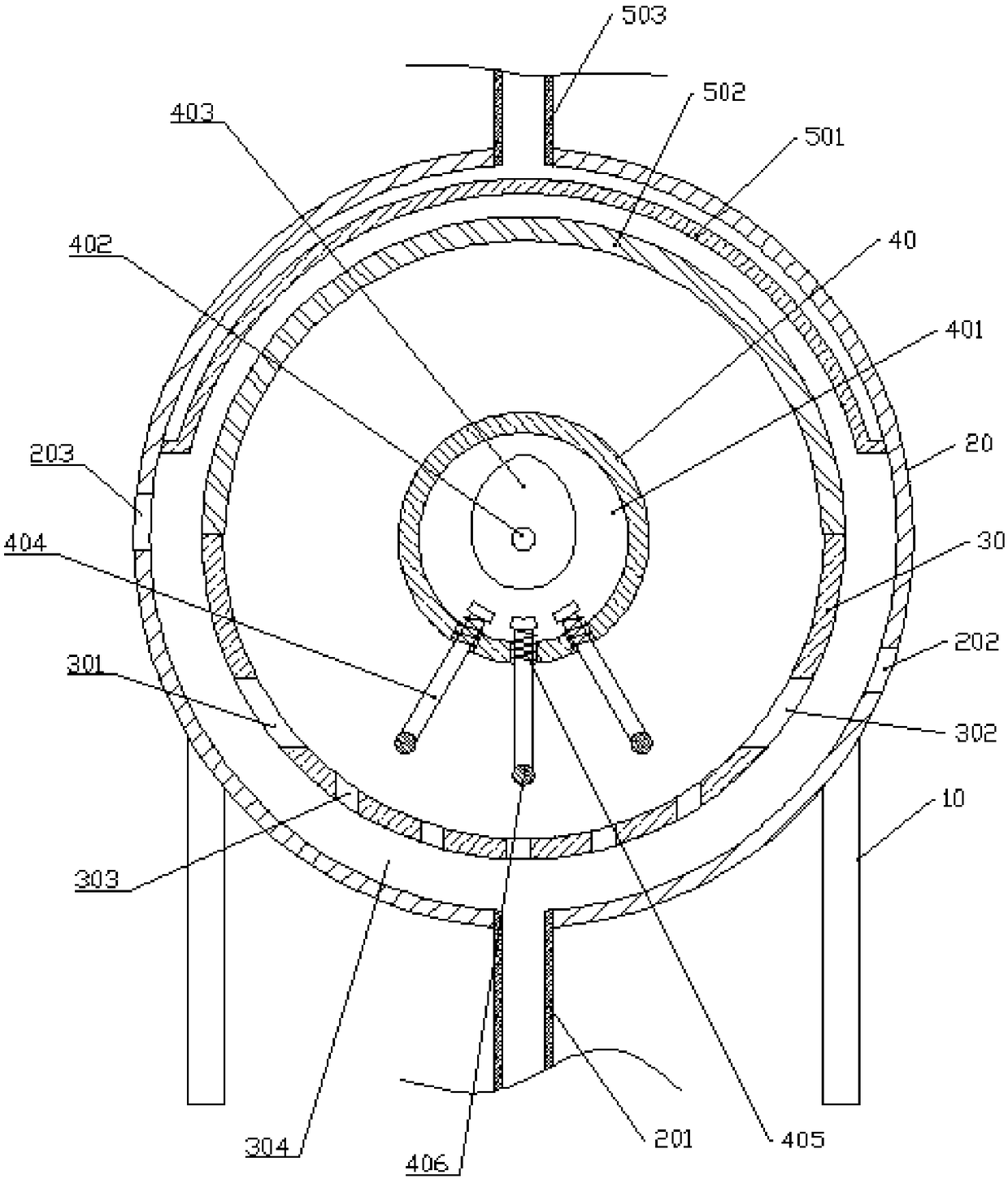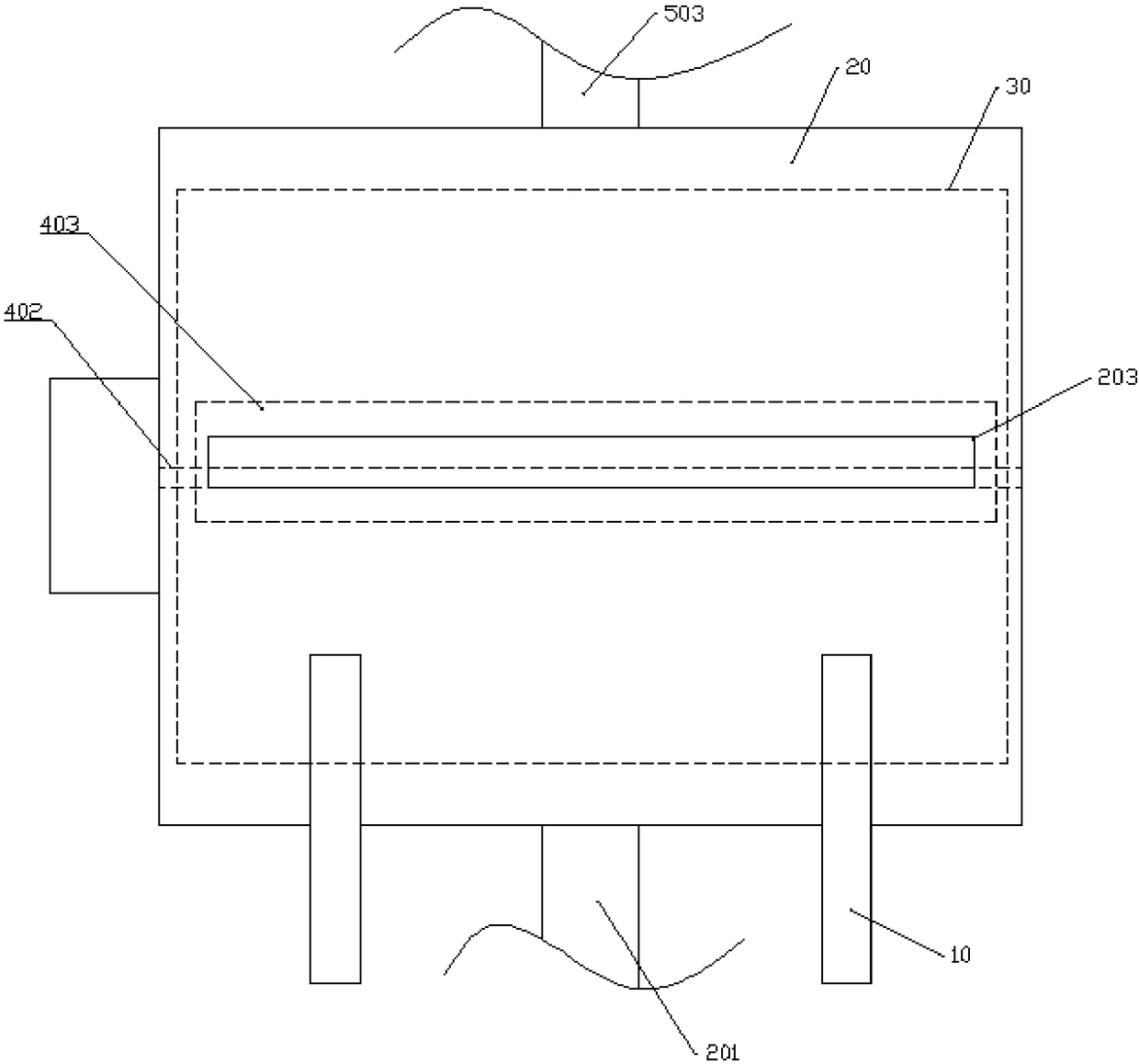Dyeing method for cloth
A dyeing method and fabric technology, applied in the field of fabric processing, can solve the problems of uneven dyeing of fabrics, low degree of dyeing, increased fabric processing procedures and processing costs, etc., and achieve the effect of reducing processing steps.
- Summary
- Abstract
- Description
- Claims
- Application Information
AI Technical Summary
Problems solved by technology
Method used
Image
Examples
Embodiment Construction
[0019] Further detailed explanation through specific implementation mode below:
[0020] The reference signs in the drawings of the description include: frame 10, outer cylinder 20, water inlet pipe 201, second inlet 202, second outlet 203, inner cylinder 30, first inlet 301, first outlet 302, through hole 303, Dye chamber 304, fixed shaft 40, accommodating chamber 401, rotating shaft 402, cam 403, slide bar 404, spring 405, kneading ball 406, first heating wire 501, second heating wire 502, air outlet pipe 503.
[0021] The concrete steps of method in the present embodiment are as follows:
[0022] Step 1: Prepare dye raw materials: 9kg of colorant, 30kg of pigment, 8kg of acetic acid, 8kg of preservative, 6kg of anti-sedimentation agent, 4kg of wetting agent, and 5kg of mordant.
[0023] Step 2: Prepare the basics as attached figure 1 And attached figure 2 A dyeing device shown includes a frame 10, including a dyeing mechanism, an extrusion mechanism and a drying mechani...
PUM
 Login to View More
Login to View More Abstract
Description
Claims
Application Information
 Login to View More
Login to View More - R&D
- Intellectual Property
- Life Sciences
- Materials
- Tech Scout
- Unparalleled Data Quality
- Higher Quality Content
- 60% Fewer Hallucinations
Browse by: Latest US Patents, China's latest patents, Technical Efficacy Thesaurus, Application Domain, Technology Topic, Popular Technical Reports.
© 2025 PatSnap. All rights reserved.Legal|Privacy policy|Modern Slavery Act Transparency Statement|Sitemap|About US| Contact US: help@patsnap.com


